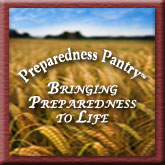The galas came in well despite the heat, deer and drought. Not on our tree, of course --deer got them all, but for others. Perhaps semi-dwarf trees were not the right choice!
We bought some from a local who takes care of trees for an absentee landlord. We should have tried them first as the subtleties of apple harvest had been missed.
What do I mean? Imagine your favorite apple. Take a bite. Is it crisp, juicy and sweet? Probably. Were the ones we bought? No. Texture was like and old sponge. A dry old sponge. This is completely preventable, especially considering that the trees were under irrigation.
So how does this happen to the novice apple-harvester? What is the subtle but important methodology for crisp, juicy apples?
The first step is to sample one right from the tree at first daylight, just as they start to turn from green on the way to the desired color. Is it crisp and juicy? If not, step up the water just a bit and try again two mornings later. Repeat until you get a crisp juicy apple. Keep to that schedule.
Next step is to harvest just before the flavor peaks, which again, takes some understanding of your apples. It's like cutting a rose when the bud is open enough to bloom but before it actually does.
The last two steps are critical. Harvest at first light, when the water content is high and the apples are pre-cooled. Second is to store them in a cool place. Don't just leave them in a basket on the back porch or in the barn in the heat. It will quickly ruin them. If you sell at a roadside stand, better to have a reputation for the best apples by running out mid-day (to pick again tomorrow) than having a reputation for mushy apples that have 'gone-by' or passed their peak when left over from a few days ago.
The good news is that our purchase was not total waste. They made good apple sauce!
Getting prepped
3 years ago




No comments:
Post a Comment